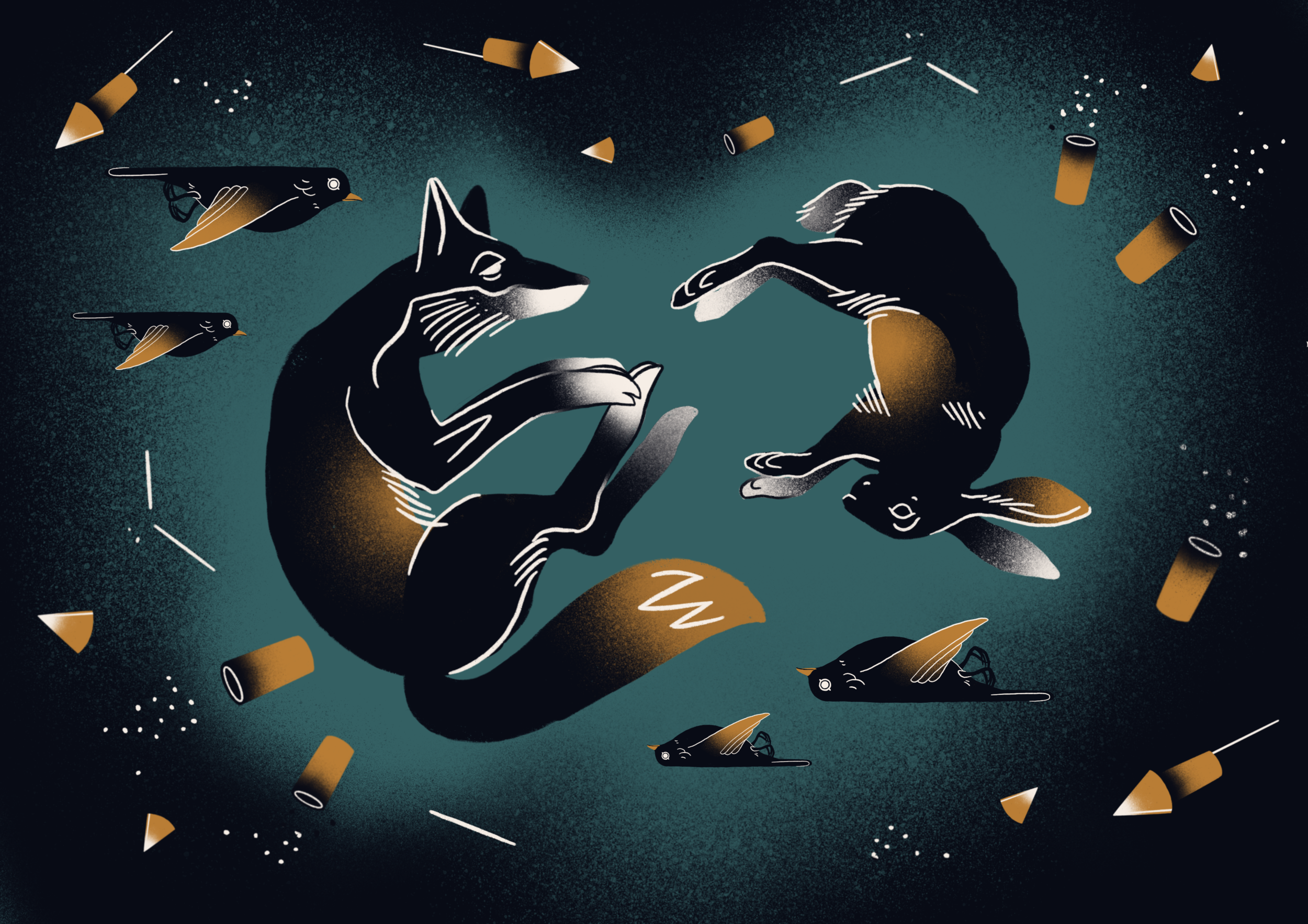VEGAN TATTOOS—WHAT’S ON AND UNDERNEATH YOUR SKIN
Say what? “What’s not vegan about tattoos,” you ask? That’s an absolutely legitimate question. I didn’t know for a long time either that it’s worth and necessary looking into tattoos and if they could be in some way connected to animal exploitation and cruelty.
Just like with many other products, there was never a reason for me to question if tattoos were somehow connected with animal cruelty. Once you get aware of the massive exploitation and massacre of other animals, you start questioning everything.
➸ Read about “Is Your Period Vegan?”
Veganism is, unfortunately, still strongly associated and misfortunately reduced to a meat-free and dairy-free diet and cruelty-free clothing, but how does veganism relate to the tattoo industry?
This blog post will list what you need to know about tattoos and tattoo care being animal-friendly or if you’re unknowingly supporting animal cruelty.
VEGAN OR NOT?
Never assume, always ask. It is Your responsibility to know better. Better be safe than sorry.
Nowadays most tattoo artists know about animal-derived ingredients in or animal testings for tattoo colors and other working materials and equipment. Some may have already switched to one of the popular vegan brands as they are more widely spread within the tattoo scene. Another reason would also be due to higher demand artists need to adapt to the customers’ awareness, wishes, and needs (that’s why it is also so important to ask for it).
Although vegan products are more common, it can never and should never be assumed that an artist is only working with vegan materials. Unless explicitly stated, it should be assumed that tattoo ink and all other materials used are related to animal exploitation including ingredients derived from animals or tested on them. It is Your responsibility to ask for the information and to decide on a different artist if it doesn’t meet your needs and ethical standard.
NON-VEGAN SUBSTANCES AND INGREDIENTS TO WATCH OUT FOR
When it comes to tattooing there are a couple of different things that should be questioned and looked at more closely. Some of them might be more obvious, and others are not. Here are the animal-derived ingredients you need to look out for:
Shellac ➸ color obtained from a louse
Animal Bone Charcoal ➸ mostly found in black and dark colors
Carmine (Natural Red 4, Cochineal Extract, Natural Dyes, E120, etc.) ➸ the red color of the carmine louse
Lanolin ➸ wool grease
Glycerin (can be of vegetable or usually more likely animal origin) ➸ animal fat
Beeswax
Cod Liver Oil
Petroleum Jelly (also called petrolatum) ➸ animal fat
Casein ➸ milk protein
Animal testing
BLUEPRINTS & RAZORS
The stencil paper (also called transfer paper or blueprints) used by tattoo parlors is usually made from lanolin, which is derived from sheep’s wool. Vegan alternatives are just a teeny bit more expensive, but they are well worth it. If the artist refuses to buy them especially for you, buy them yourself and bring them by appointment.
Disposable razors often contain glycerin or lanolin (both fats of animal origin) in the razor’s moisture strips. They can also be from brands that test on animals, even if they don’t have moisture strips. Additionally, of course, it would be great if eco-friendly and ones made from recycled plastic are used.
If you know where your tattoo is going, shave carefully or bring a razor with a clean blade. This prevents animal suffering and unnecessary waste at the same time.
COLOR, INK
In some tattoo colors hide ingredients of animal origin such as shellac (as a stabilizer or binder), animal bone charcoal (pigment), carmine (pigment), glycerine (ink stabilizer used to make the ink easier to work with).
Glycerin is probably the most difficult ingredient to identify because it can be made from soybean or palm oil or derived from synthetic ingredients, but it can also be produced from tallow (rendered beef fat) or hooves. Finding out what the source of glycerin is can prove to be very difficult and tedious as it is often not listed on the product itself (this also applies to food). Therefore, it is recommended to simply avoid it altogether, as one must assume that it has an animal origin.
DISINFECTANTS & (AFTER) CARE PRODUCTS
Various skincare products, soaps, disinfectants, anesthetics, and pain relievers are very difficult to research and most of them are very likely tested on animals. Also, many skincare creams contain lanolin, glycerin (as a stabilizer), and/or beeswax. In this case, it is best to choose products that explicitly state and can confirm that no animal testing is done and no animal ingredients are included in their formula.
➸ Read about “Honey Isn’t Vegan.” The same reasons apply to beeswax.
ADHESIVE TAPE
The tape can include animal ingredients as well, although nowadays it is very unlikely (so I have researched) but again: better safe than sorry.
Glue can be made from gelatin, which is made from boiling up the bones and hooves of animals or with casein (milk protein). However, the majority of glue that you can buy now, and that is used in the manufacture of adhesive tape, is synthetic and made from petroleum. What’s more likely and concerning when it comes to tape are companies doing animal testing!!!
It sounds like a lot at first, but the good news is that there are many vegan-friendly alternatives available today that are affordable and easily accessible. There is no excuse for using animals.
ANIMAL LEATHER INTERIOR
Furniture is not directly part of the tattooing process itself, but something I don’t want to keep out of mind when talking about vegan tattoos.
Don’t judge too fast though when you enter a tattoo parlor/studio when you see a leather-like interior. Most tattoo tables (massage tables) are made from artificial leather. Furniture could also be from a non-vegan time. You know it all. Just ask, and an interesting and flourishing conversation may start.
ENVIRONMENTAL IMPACT
As in any other profession, there are also in tattooing avoidable materials and unavoidable materials that must be used for doing the job. Especially when it comes to a work where the highest standards of hygiene should be maintained, need to be met, and are also unavoidable. As much as it would be nice to be able to entirely do without disposable plastic, this is not always possible. Some materials can be produced or used more sustainably, where others simply cannot.
Those who want to do completely without plastic will probably be disappointed and probably have to decide better to be without tattoos because tattoo artists are of course strongly dependent on which hygiene products are available to them.
Do not blame the artist. It’s just not completely possible without disposable plastic these days. The request for more sustainability and more conscious handling of working materials to express is of course always welcome, so I have been told.
A BIG NO-NO AND RED FLAG
If the tattoo artist of your choice does not take your request and concerns seriously, it’s a big no-no for me. Ask yourself if you want to put your body and trust in the hands of a person who doesn’t bother to answer more than justified questions and, ideally, follow your wishes. I would not do that (anymore).
If they don’t have the animal-friendly working tools or won’t purchase them only for You (for extra money of course), you can still ask to bring your own. Please always ask your tattoo artist upfront first if they are comfortable (due to safety and experience reasons) using these alternatives. Be ready and open to signing a separate paper confirming that you take responsibility for the products you bring.
Ethical and animal-free consumption is more sustainable for both artists and customers, and many tattoo studios have recognized this and are trying to implement an exclusively vegan-friendly tattoo setup.
COMMUNICATION IS KEY
It’s in your right to ask tattoo artists if they can adapt to your wishes, but do it kindly and don’t expect them to understand your reasons right away. After all, we are still living in a non-vegan world where most people aren’t aware of the animal suffering that is present in all kinds of products. If they are unfriendly or even mock you for being “too picky”, “too extreme” or annoying, it’s a red flag if you ask me!
Non-human animals value their lives just as much as ours matters to us. It’s their life and it is your skin. There’s more to a tattoo artist than his*her style: a friendly ear, an understanding, an acceptance, and a professional service. If all this is met, you should also be willing to pay a reasonable price. After all, you will probably wear and look at the artwork on your body for the rest of your life.
~~~~~
NOT YET VEGAN?
Please check out this page and make the change!
Please note:
➸ when the term "human" is used, then human animals are meant by it, and the same applies to the term "animal", who are non-human animals.➸ text and illustrations are intellectual property of Kerstin Brueller. Sharing the content for private purposes is appreciated and always to be provided with a copyright. It is prohibited to copy and share it for commercial purposes. Please contact me for a collaboration, if you are unsure or have any further questions. Thanks for your understanding.➸ I personally care much about symbolism and the meaning of certain shapes and metaphors. The images and interpretations are the representation of my own imagination.➸ I dearly care about an inclusive language. Language is always evolving and I myself learn something new every day.SOURCES
Kady XVD – Vegan Tattoo Info: How To Make Sure Your Tattoo Is Vegan!
Veganblatt – Vegane Tattoos Und Tattoopflege
News from Wales – Is Adhesive Tape Vegan?




















